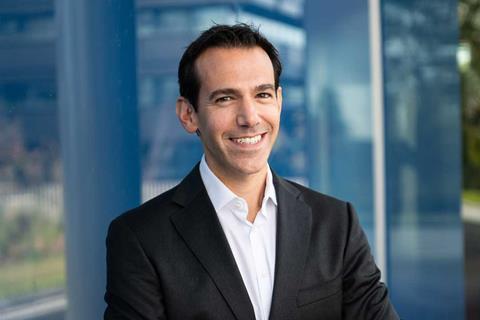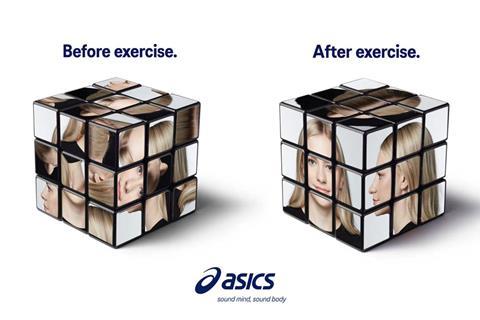SGI Europe spoke to Gary Raucher, Executive Vice President, Head of Product, Marketing, and Merchandising at Asics, about the brand’s influential role in promoting physical and mental health through sport.

SGI Europe: Gary, Asics, means “anima sana in corpore sano”. Could you elaborate on how this is brought to life in your brand’s strategy, particularly in light of recent global challenges?
Gary Raucher: Certainly, our founding purpose at Asics, which is to help people achieve a “Sound Mind in a Sound Body,” has never been more relevant. In today’s world, where mental health struggles are unfortunately increasing, our commitment to this purpose stands strong. This ethos is not just a part of our history but a guiding principle that continues to differentiate us in the sports industry. Our approach has always been to care deeply about our athletes’ and consumers’ overall well-being, distinguishing us from brands primarily focusing on winning.
With the onset of Covid-19 and other global issues, has there been a shift in how Asics focuses on these aspects?
Interestingly, even before Covid-19, the World Health Organization had identified stress and anxiety as a global pandemic. Asics had begun reinforcing our brand positioning around our core philosophy even before the pandemic, which only validated our direction. Our campaigns and initiatives around mental health, particularly surrounding World Mental Health Day, are part of our regular efforts to address these ongoing challenges. In 2020, we started bringing our Sound Mind, Sound Body positioning to life with campaigns, and since then, we have been doing marketing communications around this topic consistently.

Future Initiatives and Community Impact
What upcoming initiatives can we expect from Asics that build on this foundation?
We are actively working on a new campaign for World Mental Health Day 2024, which we aim to launch by late September. These initiatives are designed to resonate deeply with our consumers, continuing our commitment to improving mental well-being through movement.
Can you share how these Asics’ campaigns have influenced both the brand perception and your internal team dynamics?
We have certainly a tremendous momentum. Our campaigns have significantly boosted all our brand metrics, enhancing our image as a caring brand and we see that our engagement levels have increased quite significantly.
Last year we had record sales in Europe but if you look at our global results as well, we have gained market share in every one of our major categories.
Internally, we ensure that our team members embody our philosophy of ‘Sound Mind, Sound Body,’ as they are our most important brand ambassadors. This holistic approach has proven effective not only in external brand perception but also in fostering a strong internal community committed to our values.
What makes you so sure that these purpose-driven, brand-related campaigns are the reason for the success?
I can’t suggest that it’s just the campaigns that have led to all that success, but we do brand uplift studies after each one of these campaigns, specifically looking at both pre– and post–campaign and exposed–and–unexposed shifts. In fact, we’ve seen a greater impact on both brand and business metrics from these brand-oriented campaigns.
As an innovative company, we do, of course, have product-oriented campaigns. We believe in the superiority of our products. But what we have seen is that just talking about product is not enough. We need to wrap that with our brand story.
Engaging Younger Generations and Future Plans
To what extent should companies like Asics get involved in society, for example, by promoting more exercise?
We believe that our purpose is to try to get as many people as possible to achieve a sound mind in a sound body, and so I think that we, as a brand, play a very critical role in society. I mentioned before that we unfortunately see statistics that show that people are moving less and less. Our own research has proven that it only takes 15 minutes and 9 seconds of movement a day to be able to achieve a mental uplift. Of course, we’re going to continue to serve our most demanding elite athletes with the most technologically superior products. Still, at the same time, as a brand, we think it’s important to inspire more people to move. And I think that is our role in society. A great example is our partnership with the City of Paris, which is called “Paris – Move Your Mind.” We have focused on publicizing opportunities within the city for people to get out and move regularly. We created a number of events, both one-off and recurring communities. Everything has the goal of trying to get more Parisians to discover sport and to stay with sport and movement because we know that it positively impacts both their physical and mental well-being.
How do you choose the communities you want to support?
We’re trying to identify the people and places that most need a mental uplift. Our state of mind index that we publish every year is here very helpful. When we first published it we discovered that there was a market town in the UK called Redford that had the lowest state of mind index in the UK. We worked with the local municipality, we transformed the town into a movement-inspired gym, with even the local mayor participating. We were measuring the state of mind both before event and post-event to be able to demonstrate that when people get out and move, they feel better.
How does Asics plan to engage younger generations, particularly those at risk of dropping out of sports?
Our research indicates a critical age range, between 14 and 16, where young people often disengage from sports. Our upcoming activations, especially post-Olympics, are focused on keeping this demographic engaged through various programs designed to make sports more accessible and enjoyable, ensuring they continue to benefit from physical activity throughout their lives.
In terms of broader industry collaboration, how is Asics working with other organizations to promote physical activity?
We are in continuous dialogue with industry groups like the WFSGI and peers to explore collective strategies to encourage more people to move. For instance, our partnership with the City of Paris aims to create lasting impacts in communities, not just transient events. These efforts are part of a broader industry commitment to not only boost activity levels but also ensure the sustainability of these initiatives.
Gary, thank you for sharing these insights.

Impact of Sports 2024
The global physical inactivity crisis is real. Our duty as an industry is to inspire a healthy and active lifestyle. That's why we're dedicating a new content series to the Impact of Sports.
>> Find out more.







